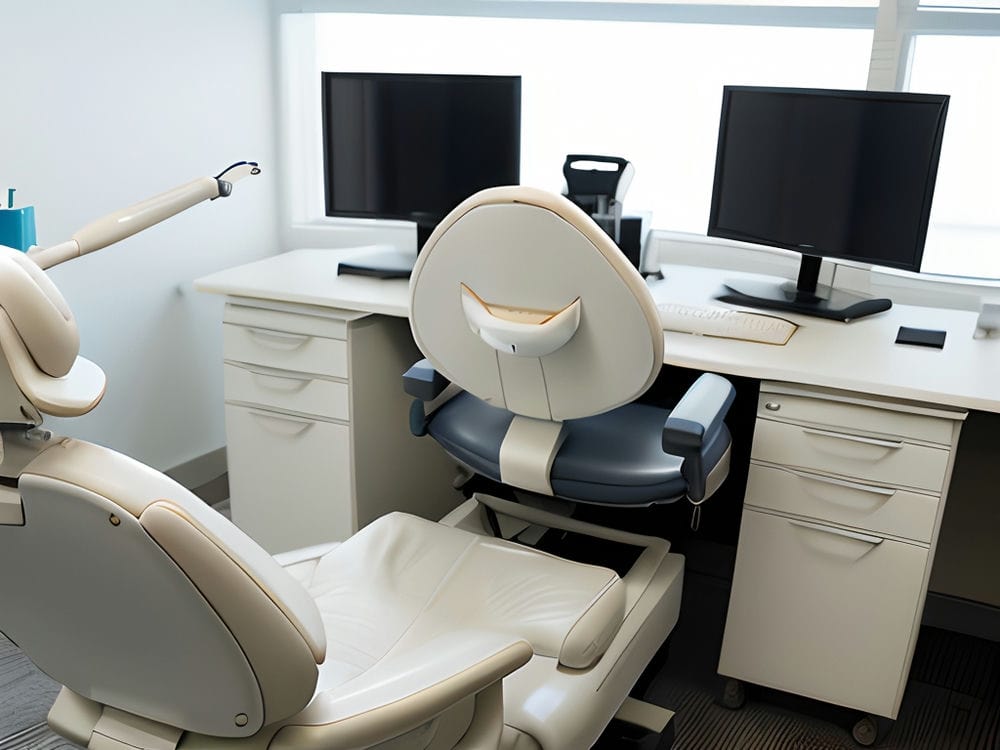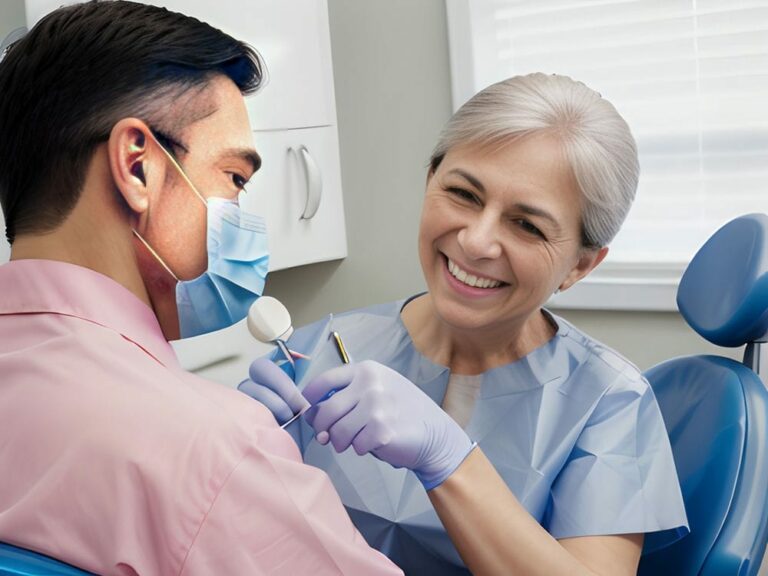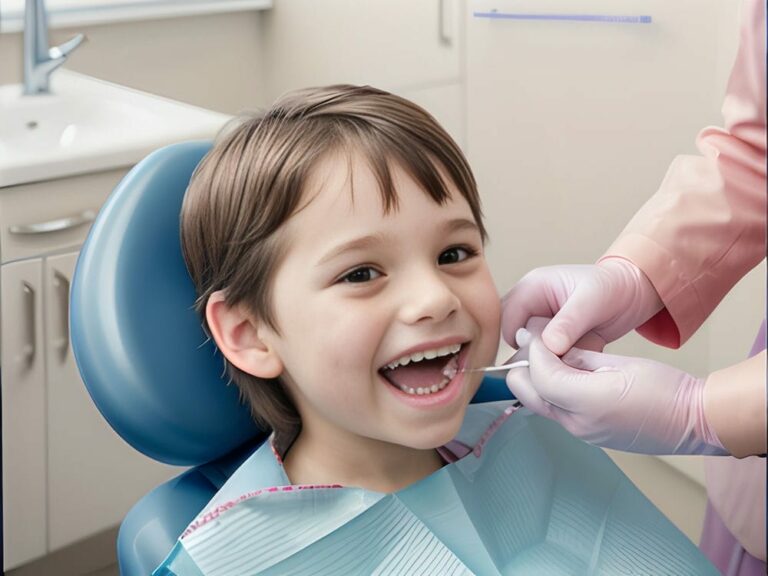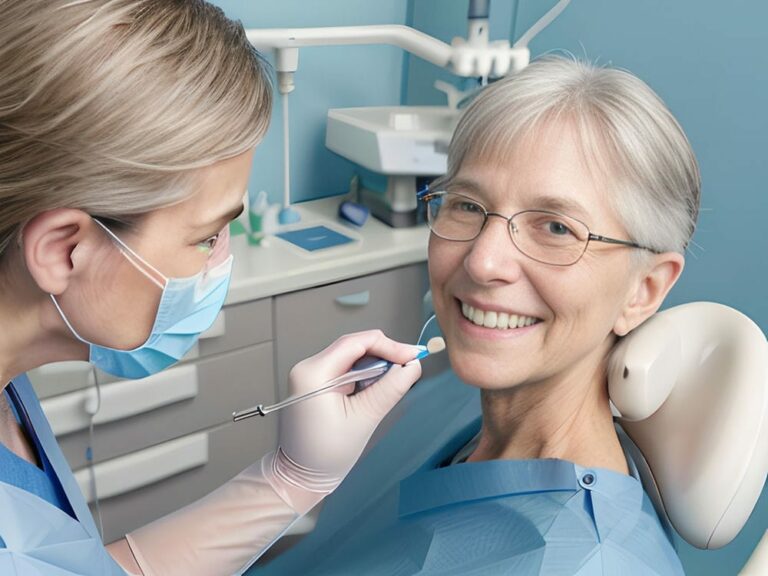The Origins of Regenerative Dental Medicine Technologies
The field of regenerative dental medicine has come a long way since its inception. The origins of these groundbreaking technologies can be traced back to the early 1960s, when researchers first began exploring the potential of using tissue engineering to restore and regenerate damaged dental tissues. This marked a significant shift in the field of dentistry, as it offered new hope for patients with conditions such as tooth loss or gum disease.
One of the earliest breakthroughs in regenerative dental medicine was the development of dental implants. These devices are designed to replace missing teeth by surgically placing an artificial tooth root into the jawbone. Over time, the implant fuses with the surrounding bone, creating a stable foundation for a replacement tooth. Dental implants revolutionized the field by providing a more natural and long-lasting solution for tooth loss compared to traditional dentures or bridges.
Another area where regenerative dental medicine has made significant strides is in periodontal regeneration. Periodontal disease, also known as gum disease, is a common condition that affects millions of people worldwide. In severe cases, it can lead to tooth loss and other serious complications. However, advancements in regenerative techniques have allowed dentists to stimulate the growth of new bone and tissue in affected areas, helping to restore oral health and prevent further damage.
Regenerative dental medicine has also had a profound impact on oral surgery procedures. Traditionally, surgical interventions such as bone grafting or sinus lifts were necessary to provide adequate support for dental implants or address other oral health issues. However, with the advent of regenerative technologies, these procedures have become less invasive and more effective. For example, techniques like guided bone regeneration use biocompatible materials and growth factors to stimulate bone regrowth without the need for extensive surgical interventions.
In summary, regenerative dental medicine technologies have their roots in pioneering research conducted over half a century ago. From the development of dental implants to advancements in periodontal regeneration and oral surgery procedures, these innovations have transformed the field of dentistry. As technology continues to advance, it is likely that regenerative dental medicine will continue to evolve, offering even more effective and minimally invasive solutions for patients in need.
Exploring the Role of Stem Cells in Dental Regeneration
The field of regenerative dental medicine has seen significant advancements thanks to the exploration of dental tissue engineering, growth factors, and regenerative endodontics. These technologies have revolutionized the way dentists approach restoring damaged dental tissues and have opened up new possibilities for patients in need.
Dental tissue engineering involves the use of biocompatible materials and cells to regenerate dental tissues such as enamel, dentin, and pulp. This approach aims to recreate natural tooth structure and function, offering a more long-lasting solution for patients with tooth decay or damage. By combining the principles of biology and engineering, researchers have been able to develop innovative techniques that promote the growth and regeneration of dental tissues.
Growth factors play a crucial role in regenerative dental medicine by stimulating cell proliferation and differentiation. These proteins can be derived from various sources, including platelets or recombinant technology. By applying growth factors to damaged areas, dentists can enhance tissue regeneration processes and promote healing. This has proven particularly effective in procedures such as bone grafting or periodontal regeneration, where the growth factors help stimulate new bone or tissue formation.
Regenerative endodontics focuses on preserving the vitality of teeth by regenerating damaged pulp tissue. Traditionally, teeth with infected or necrotic pulp would require extraction or root canal therapy. However, regenerative endodontics offers an alternative approach by using stem cells from the patient’s own body or other sources to regenerate healthy pulp tissue. This technique not only saves natural teeth but also restores their functionality and aesthetics.
With ongoing research and technological advancements, regenerative dental medicine continues to evolve rapidly. The integration of dental tissue engineering, growth factors, and regenerative endodontics has paved the way for more effective treatments with improved patient outcomes. As this field progresses further, it holds great promise for providing even more advanced solutions for patients with various oral health conditions without compromising natural tooth structure or function.
Advancements in Tissue Engineering for Dental Restoration
Bad gateway.
Understanding the Science Behind Bone Regeneration in Dentistry
Understanding the Science Behind Bone Regeneration in Dentistry
Bone regeneration is a crucial aspect of dental medicine, as it plays a vital role in restoring and replacing damaged or missing teeth. Over the years, significant advancements have been made in the field of regenerative dental medicine, resulting in innovative technologies that have revolutionized treatment options for patients. One such advancement is biofabrication, which involves the creation of three-dimensional structures using living cells and biomaterials.
Biofabrication offers immense potential for bone regeneration by providing a scaffold that supports the growth of new bone tissue. This technology utilizes various materials, such as ceramics and polymers, to create structures that mimic the natural composition of bone. By incorporating living cells into these scaffolds, biofabrication allows for the regeneration of functional bone tissue with enhanced biocompatibility and mechanical properties.
Another promising approach in regenerative dental medicine is gene therapy. Gene therapy involves introducing specific genes into damaged tissues to promote their repair and regeneration. In the context of bone regeneration, gene therapy can be used to enhance the production of key growth factors or signaling molecules involved in bone formation. By manipulating gene expression within target cells, this technique can stimulate the proliferation and differentiation of osteoblasts, which are responsible for bone formation.
Cell therapy is yet another significant advancement in regenerative dental medicine. This approach involves transplanting stem cells or other cell types into damaged tissues to promote their repair and regeneration. In the case of bone regeneration, mesenchymal stem cells (MSCs) hold great promise due to their ability to differentiate into osteoblasts and contribute to new bone formation. Additionally, MSCs possess anti-inflammatory properties that can aid in reducing inflammation and enhancing healing at the site of injury.
In summary, advancements in regenerative dental medicine have opened up new possibilities for bone regeneration. Biofabrication allows for the creation of customized scaffolds that support the growth of functional bone tissue. Gene therapy and cell therapy offer unique approaches to enhance the regeneration process by manipulating gene expression and introducing stem cells, respectively. These innovative technologies hold great potential in revolutionizing dental treatments and improving patient outcomes.
The Promise and Potential of Tooth Regeneration Techniques
Regenerative medicine research has made significant strides in the field of dental bioengineering, particularly in the area of tooth regeneration. Understanding the natural process of tooth development has been instrumental in developing techniques to stimulate and guide the regeneration of new teeth. This cutting-edge research holds immense promise and potential for revolutionizing dental treatments.
One approach in tooth regeneration involves harnessing the power of stem cells. Stem cells have the unique ability to differentiate into various cell types, including those found in teeth. By isolating and manipulating these cells, researchers can encourage them to develop into functional tooth structures. This technique could potentially offer a solution for individuals who have lost their teeth due to injury or disease.
Another avenue being explored is tissue engineering, which involves combining stem cells with biomaterials to create a scaffold that supports tooth formation. By providing a framework for cell attachment and growth, these scaffolds can help guide the regeneration process and promote the development of fully functional teeth. This approach shows great promise in overcoming some of the limitations associated with traditional dental implants.
The field of regenerative dental medicine is constantly evolving, with ongoing research focused on improving techniques for tooth regeneration. By understanding the intricate processes involved in tooth development and harnessing the power of stem cells, researchers are paving the way for innovative solutions to restore damaged or missing teeth. With continued advancements in dental bioengineering, it is exciting to envision a future where regenerating teeth becomes a routine part of dental care without relying solely on artificial replacements or implants.
Innovations in Biocompatible Materials for Dental Applications
Bad gateway.
From Lab to Clinic: Translating Regenerative Dental Medicine Research
Dental tissue regeneration, also known as oral tissue engineering, is a rapidly evolving field that has seen significant advancements in recent years. These developments have opened up new possibilities for regenerative dentistry, allowing for the repair and regeneration of damaged or lost dental tissues. This article will provide an in-depth understanding of the evolution of regenerative dental medicine technologies and the impact they have had on the field.
One of the key advancements in regenerative dentistry has been the development of biocompatible materials specifically designed for dental applications. These materials play a crucial role in supporting tissue regeneration by providing a scaffold for cells to grow and differentiate. In recent years, researchers have focused on developing materials with improved biocompatibility and mechanical properties to enhance their effectiveness in promoting tissue regeneration. This has led to the emergence of novel biomaterials such as hydrogels, scaffolds, and bioactive ceramics that can mimic the natural extracellular matrix of dental tissues.
In addition to biocompatible materials, advancements in stem cell research have also revolutionized regenerative dentistry. Stem cells are undifferentiated cells that have the ability to differentiate into various cell types found in dental tissues. Researchers have identified different sources of stem cells that can be used for dental tissue regeneration, including dental pulp stem cells, periodontal ligament stem cells, and induced pluripotent stem cells. By harnessing these cells’ regenerative potential, scientists hope to develop innovative therapies for various dental conditions such as tooth loss, periodontal disease, and craniofacial defects.
The field of regenerative dentistry continues to evolve at a rapid pace due to ongoing research and technological advancements. With each new breakthrough comes the potential for improved treatments and outcomes for patients with dental-related issues. As researchers continue to explore new avenues in dental tissue regeneration and oral tissue engineering, it is likely that we will see even more exciting advancements in regenerative dentistry in the future. These advancements have the potential to transform the field of dentistry, providing patients with more effective and long-lasting solutions for their dental needs.
Surgical Techniques and Procedures for Implementing Regenerative Solutions
The evolution of regenerative dental medicine technologies has brought about significant advancements in the field of dentistry. One key development has been the creation of biocompatible materials specifically designed for dental applications. These materials act as scaffolds for cells to grow and differentiate, promoting tissue regeneration. Scientists have focused on improving the biocompatibility and mechanical properties of these materials, leading to the emergence of novel biomaterials like hydrogels and bioactive ceramics that mimic the natural extracellular matrix of dental tissues.
Another major breakthrough in regenerative dentistry is stem cell research. Stem cells have the ability to differentiate into various cell types found in dental tissues, making them ideal for regeneration purposes. Different sources of stem cells, such as dental pulp stem cells and periodontal ligament stem cells, have been identified by researchers. These stem cells offer potential solutions for treating tooth loss, periodontal disease, and craniofacial defects.
As research continues and technology advances, regenerative dentistry is constantly evolving. Each new breakthrough brings the promise of improved treatments and outcomes for patients with dental issues. Ongoing exploration in dental tissue regeneration and oral tissue engineering will likely lead to even more exciting advancements in the future. These advancements have the potential to transform dentistry by providing more effective and long-lasting solutions for patients’ dental needs.
Overcoming Challenges and Limitations in Regenerative Dental Medicine
The evolution of regenerative dental medicine technologies has brought about significant advancements in the field of dentistry. One key development has been the creation of biocompatible materials specifically designed for dental applications. These materials act as scaffolds for cells to grow and differentiate, promoting tissue regeneration. Scientists have focused on improving the biocompatibility and mechanical properties of these materials, leading to the emergence of novel biomaterials like hydrogels and bioactive ceramics that mimic the natural extracellular matrix of dental tissues.
Another major breakthrough in regenerative dentistry is stem cell research. Stem cells have the ability to differentiate into various cell types found in dental tissues, making them ideal for regeneration purposes. Different sources of stem cells, such as dental pulp stem cells and periodontal ligament stem cells, have been identified by researchers. These stem cells offer potential solutions for treating tooth loss, periodontal disease, and craniofacial defects.
As research continues and technology advances, regenerative dentistry is constantly evolving. Each new breakthrough brings the promise of improved treatments and outcomes for patients with dental issues. Ongoing exploration in dental tissue regeneration and oral tissue engineering will likely lead to even more exciting advancements in the future. These advancements have the potential to transform dentistry by providing more effective and long-lasting solutions for patients’ dental needs.
Looking Towards the Future: Emerging Trends in Dental Regeneration
The evolution of regenerative dental medicine technologies has revolutionized the field of dentistry, offering new possibilities for restoring and regenerating dental tissues. One emerging trend in dental regeneration is the use of 3D printing technology. This technology allows for the fabrication of customized dental implants and scaffolds that perfectly fit a patient’s unique anatomy. By using 3D printing, dentists can create precise replicas of missing or damaged teeth, improving the accuracy and effectiveness of treatments.
Another exciting trend in dental regeneration is the integration of nanotechnology into dental materials. Nanotechnology involves manipulating materials at the atomic or molecular scale to enhance their properties. In dentistry, nanomaterials can be used to improve the strength, durability, and biocompatibility of dental restorations and implants. This can lead to longer-lasting and more aesthetically pleasing results for patients.
Additionally, researchers are exploring the potential of gene therapy in regenerative dentistry. Gene therapy involves introducing genetic material into cells to promote tissue regeneration or repair genetic defects. In dentistry, gene therapy could be used to stimulate the growth and differentiation of dental stem cells or promote tissue healing after oral surgeries. While still in its early stages, gene therapy holds great promise for future advancements in regenerative dental medicine.
As regenerative dental medicine continues to evolve, these emerging trends have the potential to greatly improve treatment outcomes for patients with dental issues. The integration of 3D printing technology, nanotechnology, and gene therapy into dental practice will allow for more personalized and effective solutions for restoring and regenerating dental tissues. With ongoing research and technological advancements, the future of regenerative dentistry looks incredibly promising.
FAQs
Q: What is regenerative dental medicine?,
A: Regenerative dental medicine focuses on using biological technologies to repair and regenerate dental tissues and structures.,
Q: How does regenerative dental medicine work?,
A: Regenerative dental medicine uses various techniques such as stem cell therapy, tissue engineering, and biomaterials to stimulate the body’s natural healing processes and promote the regeneration of dental tissues.,
Q: What are the benefits of regenerative dental medicine?,
A: Regenerative dental medicine offers several benefits, including the potential for tooth and bone regeneration, improved healing and recovery after dental procedures, and the ability to restore damaged dental tissues.,
Q: Are there any limitations to regenerative dental medicine?,
A: While regenerative dental medicine shows great promise, it is still a relatively new field, and there are limitations to its effectiveness and applicability in certain cases. Further research is needed to fully understand its capabilities and limitations.,
Q: What are some examples of regenerative dental medicine technologies?,
A: Examples of regenerative dental medicine technologies include dental pulp stem cell therapy, platelet-rich plasma therapy, guided tissue regeneration, and the use of biocompatible scaffolds for tissue engineering.,
Q: Can regenerative dental medicine be used for tooth replacement?,
A: Regenerative dental medicine has the potential to be used for tooth replacement by promoting the regeneration of dental tissues, but it is not yet a widely available or established treatment option for tooth replacement.,
Q: Is regenerative dental medicine a safe treatment option?,
A: Regenerative dental medicine techniques are generally considered safe, but as with any medical procedure, there may be potential risks and complications. It is important to consult with a qualified dental professional to determine the best treatment approach for individual cases.,
Q: How long does it take to see results from regenerative dental medicine treatments?,
A: The time it takes to see results from regenerative dental medicine treatments can vary depending on the specific treatment and individual factors. Some treatments may show initial improvements within a few weeks, while others may require several months or longer to achieve desired outcomes.,
Q: Can regenerative dental medicine be used for cosmetic dental procedures?,
A: Regenerative dental medicine techniques can be used for certain cosmetic dental procedures, such as gum tissue regeneration or bone grafting for implant placement. However, the specific applicability will depend on the individual case and treatment goals.,
Q: Is regenerative dental medicine covered by insurance?,
A: The coverage of regenerative dental medicine treatments by insurance providers can vary. It is important to check with your insurance provider to determine if specific regenerative dental medicine procedures are covered under your plan.



















